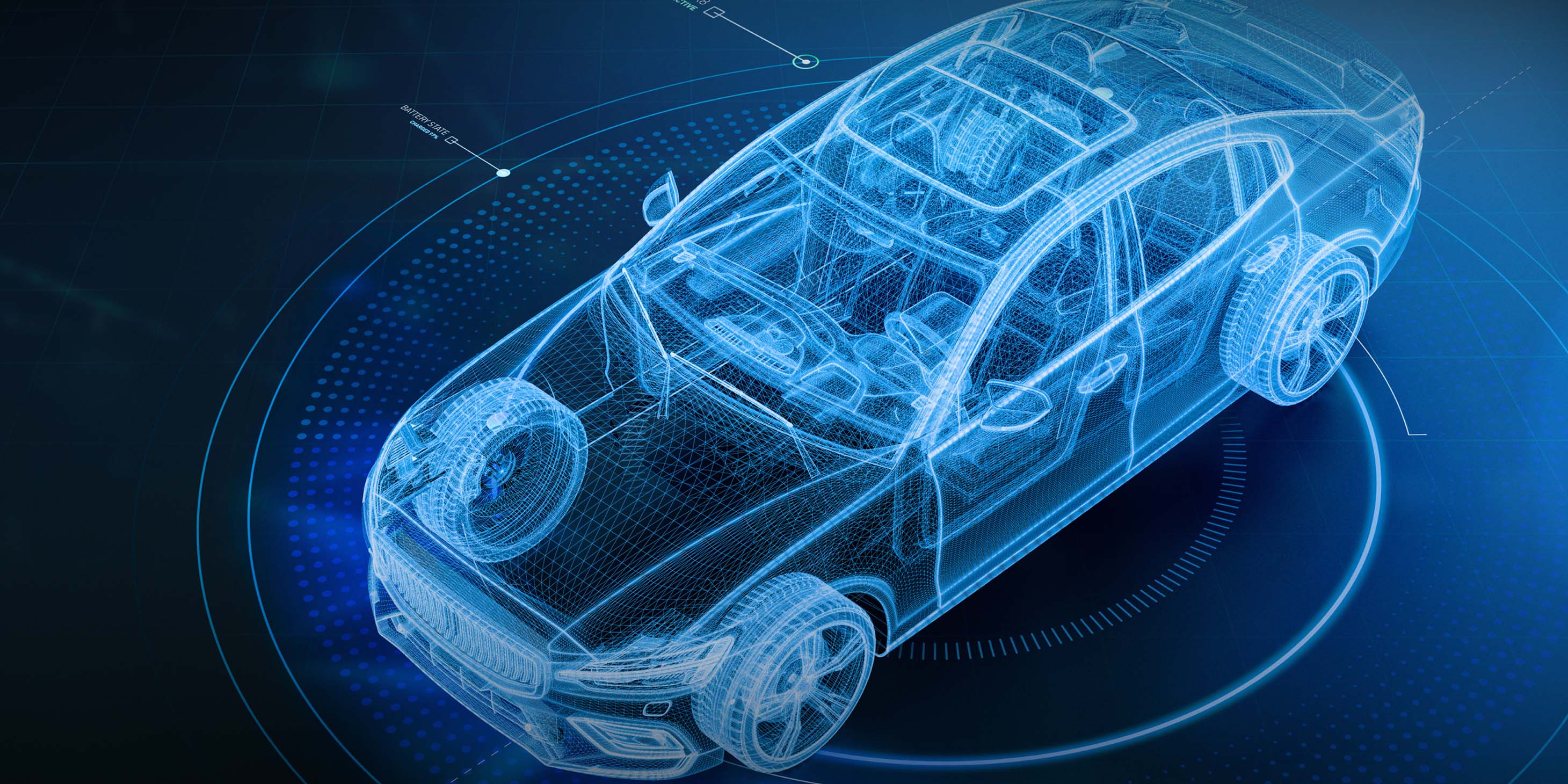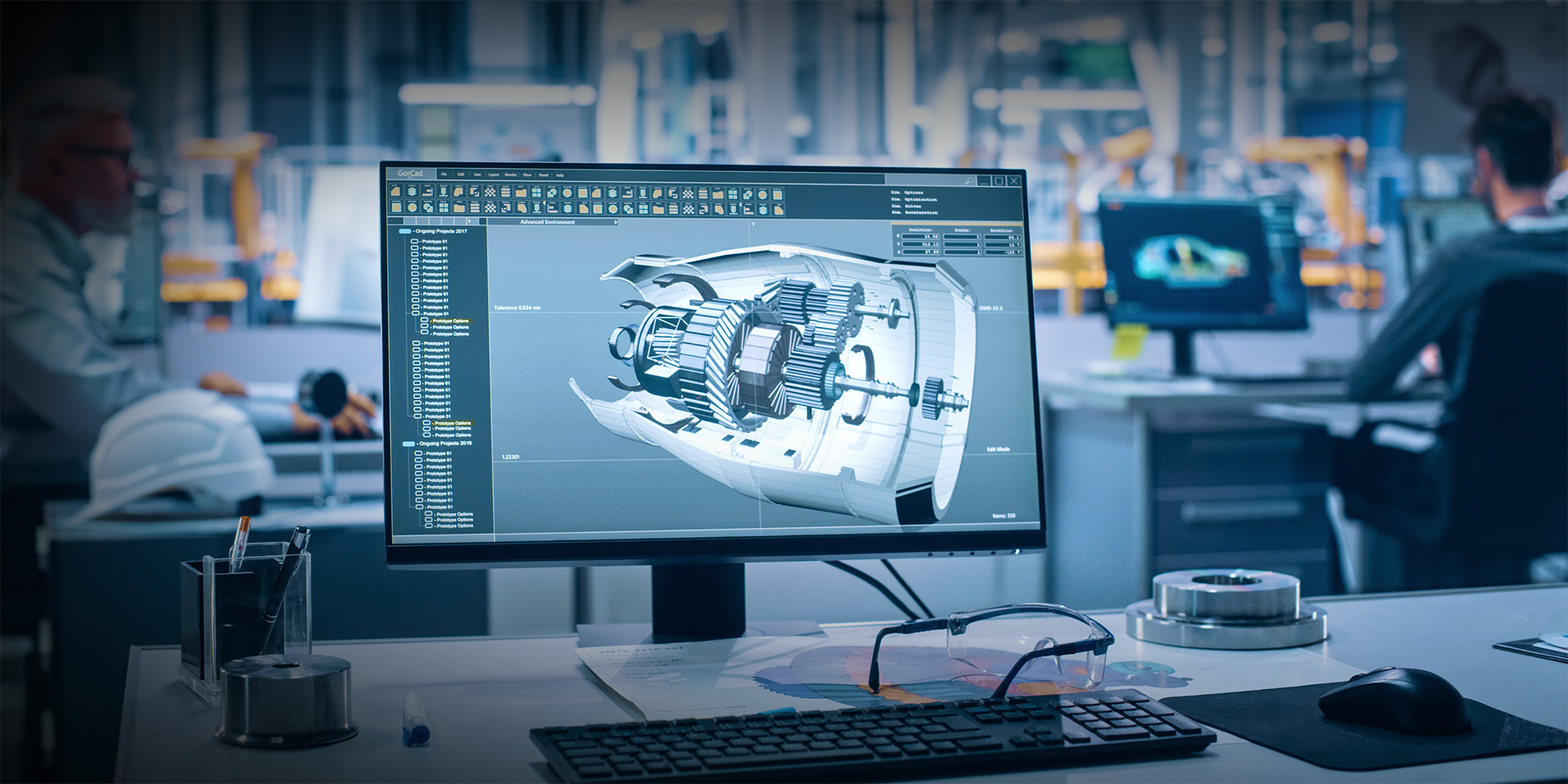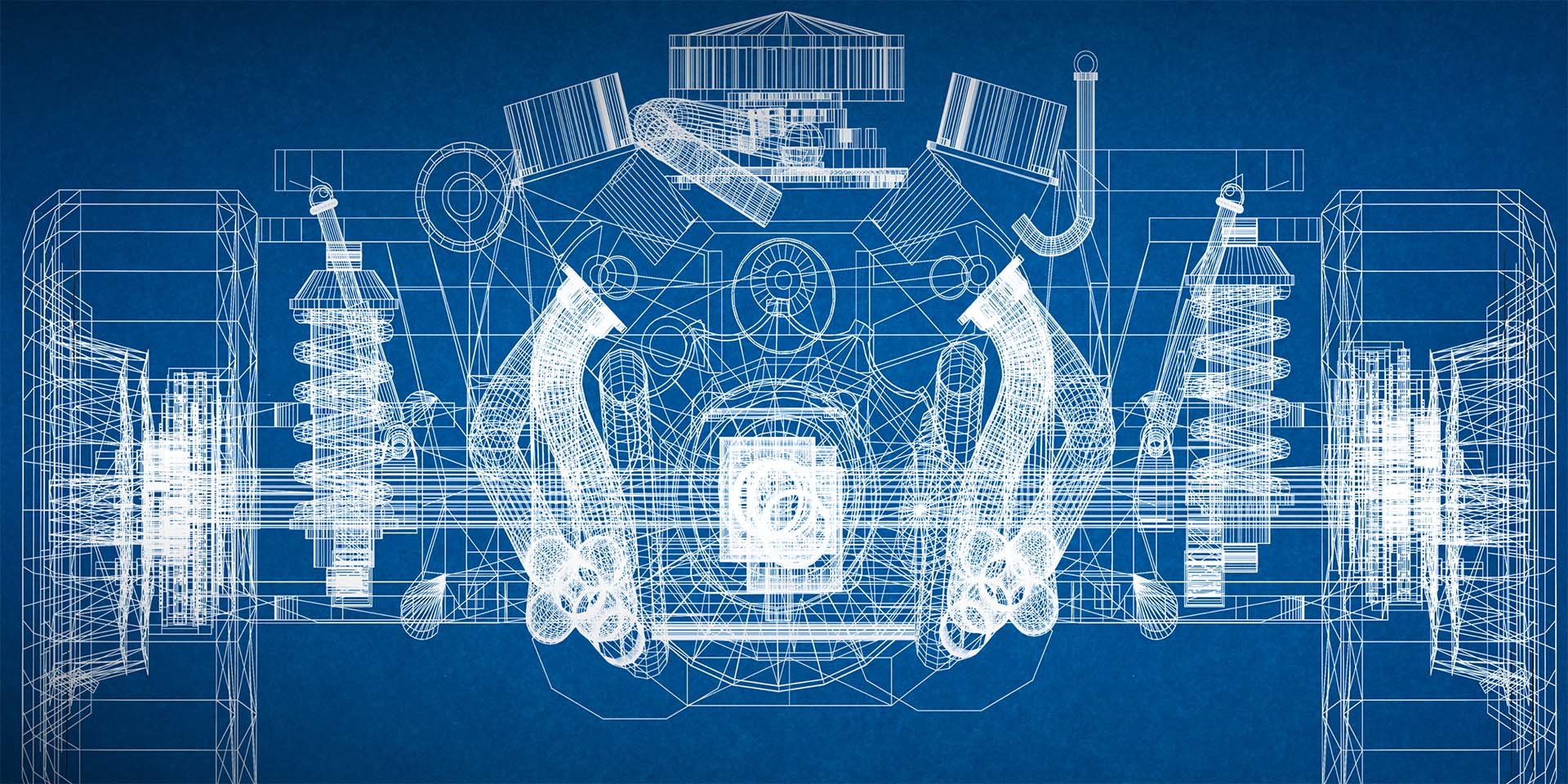
Dorian Derežić - 24/04/2024 | 12 min read
SpaceTime Predictive Maintenance Automotive
The evolving landscape of the automotive industry, powered by digital transformation and data-driven insights, has opened up a plethora of opportunities to enhance vehicle performance and customer experience.

Predictive maintenance, empowered by technologies like Mireo SpaceTime, is at the forefront of this transformation, heralding a new era in automotive maintenance strategies.
The automotive industry has been characterized by constant evolution and innovation, but perhaps none as transformative as the advent of predictive maintenance. Traditionally, vehicle maintenance followed a reactive approach, with repairs and replacements carried out in response to failures. However, the cost of vehicle downtime, coupled with the customer dissatisfaction from unexpected failures, has highlighted the need for a more proactive approach - hence, the move towards predictive maintenance.
Predictive maintenance, as the name suggests, focuses on predicting the possibility of vehicle component failures before they occur. Leveraging advanced data analytics and machine learning algorithms, it allows Original Equipment Manufacturers (OEMs) and fleet operators to monitor vehicle health, identify potential issues, and schedule maintenance activities in a timely manner. This not only minimizes unplanned vehicle downtime but also extends vehicle lifespan, optimizes maintenance costs, and enhances overall operational efficiency.
Spearheading this predictive maintenance advancement is SpaceTime. Designed to handle massive volumes of connected car data, SpaceTime offers OEMs a robust platform for data collection, processing, and predictive analytics.
With its unique capabilities, SpaceTime allows OEMs to implement a proactive, data-driven approach to maintenance. Its predictive modeling feature, in particular, is a standout - leveraging historical, real-world data, OEMs can build algorithms and models that predict when specific components or systems are likely to require maintenance or replacement. This ability to anticipate and prevent potential issues before they occur is what sets SpaceTime apart, cementing its role as a key player in the predictive maintenance landscape.
By transforming raw data into actionable insights, SpaceTime is not only helping to revolutionize vehicle maintenance strategies but also to foster a new age of vehicle reliability and customer satisfaction.
The success of predictive maintenance strategies hinges on the ability to predict potential vehicle component failures before they occur. This is where predictive modeling comes into play. A powerful tool in the predictive maintenance toolbox, predictive modeling uses statistical techniques and machine learning algorithms to predict outcomes based on historical, real-world data.
In this section, we'll delve into the role of predictive modeling in predictive maintenance and explore how it drives proactive maintenance strategies.
Predictive modeling can be defined as a statistical approach that combines the use of data and algorithms to predict future outcomes. In the automotive industry, predictive modeling for predictive maintenance plays a crucial role in understanding vehicle performance and potential areas of concern. It uses historical data, current data, and sophisticated algorithms to make predictions about the future health of vehicle systems and components.
Predictive modeling, when applied to predictive maintenance, is a game-changer. It shifts the paradigm from responding to unexpected failures to predicting and preventing them. This method of proactive maintenance management is crucial because it enhances vehicle reliability, optimizes maintenance costs, and significantly boosts customer satisfaction by reducing unplanned breakdowns.
Moreover, the value of predictive modeling extends beyond the immediate maintenance needs, contributing to the overall longevity of the vehicle, optimizing the vehicle's resale value, and enhancing the reputation of automotive brands for dependability and performance.
The engine of predictive modeling is data, specifically, the combination of historical and current data. Historical data refers to past performance records of the vehicle, including previous maintenance records, logged failures, and past performance metrics. This wealth of information provides the context needed to understand trends, identify patterns, and establish baselines for vehicle behavior.
On the other hand, current data is captured from the vehicle as it operates in real-world conditions. This includes sensor data, telematics data, and environmental data. Current data provides a current picture of the vehicle's health, enabling detection of any anomalies or deviations from established patterns.
By combining historical and current data, predictive models can make highly accurate predictions about the future state of vehicle components and systems, thereby facilitating efficient and timely maintenance actions.
The effectiveness of predictive modeling is hinged on the comprehensiveness and quality of its inputs. Key inputs include usage patterns such as mileage, engine load, idling times, and driver behavior. These patterns offer valuable insights into the stress and strain that components are subjected to, thereby contributing to predictions of their lifespan.
Environmental conditions, including weather patterns, road conditions, and ambient temperatures, also factor into the modeling process. These can significantly impact the wear and tear on vehicle components and, thus, their expected service life.
Finally, historical failure data, comprising records of past component failures and maintenance actions, is an essential input. This data allows the model to learn from past occurrences and better predict future failures. In essence, these diverse inputs make predictive models a holistic tool for maintenance prediction.
At the heart of predictive modeling lies the ability to find patterns and correlations in data. Using machine learning and statistical algorithms, predictive models sift through vast volumes of data to identify trends and correlations that might escape a human analyst's attention.
For instance, the model may identify a pattern where a specific component consistently fails after operating under specific conditions or following a particular usage pattern. By flagging these patterns, the model can predict when similar conditions may lead to the same component's failure, enabling timely maintenance before the failure occurs.
The ability to find patterns and correlations in complex and multi-dimensional data sets, while constantly learning and improving, is what gives predictive modeling its power and reliability.
Predictive modeling has a transformative impact on maintenance approaches. Traditionally, maintenance has been reactive – vehicles are repaired when they break down. However, predictive modeling paves the way for proactive maintenance, where potential issues are identified and resolved before they result in failure.
By predicting potential failures, predictive modeling allows for maintenance to be scheduled strategically, based on the component's expected lifespan and the prediction of potential failures. This leads to optimized use of resources, minimized vehicle downtime, and extended vehicle life. Furthermore, by reducing the instances of unplanned breakdowns, predictive maintenance contributes to enhancing the driving experience and customer satisfaction, which in turn leads to brand loyalty and positive word-of-mouth for the OEM.
In a highly competitive market, this proactive approach to maintenance can be a significant differentiator for automotive manufacturers.

Predictive modeling is much more than a technologically advanced tool — it's a game-changer that significantly impacts the entire approach to predictive maintenance. It holds the potential to optimize maintenance schedules, reduce costs, enhance vehicle performance, and boost customer satisfaction by minimizing unplanned breakdowns.
Predictive modeling revolutionizes the maintenance timeline, shifting the paradigm from a reactive stance to a proactive one. It utilizes data-driven insights to pinpoint the optimal time for maintenance tasks. SpaceTime's predictive modeling capabilities take into account various variables such as vehicle usage patterns, historical failure data, and environmental conditions.
In the traditional maintenance model, tasks are often scheduled based on average vehicle life expectancy or mileage. While this approach works to an extent, it can lead to unnecessary or untimely servicing. Conversely, predictive modeling allows OEMs to tailor maintenance schedules to the individual characteristics and needs of each vehicle. This means servicing is carried out when necessary, reducing unnecessary servicing while ensuring essential maintenance isn't overlooked.
As a result, resources are used more efficiently, extending the vehicle's operational life and optimizing the maintenance workflow.
Unplanned downtime is a major setback for OEMs, often resulting in significant repair costs and dissatisfied customers. Predictive modeling, by contrast, offers an avenue for avoiding these costly disruptions. By identifying subtle changes in performance data or signs of part degradation, predictive modeling enables pre-emptive maintenance and component replacement before failure occurs.
SpaceTime's sophisticated algorithms can sift through copious amounts of data to detect potential anomalies. These might be slight increases in engine temperature, minor fluctuations in oil pressure, or gradual increases in vibration levels. And when these anomalies are detected, appropriate actions can be taken to facilitate timely intervention and significantly reduce unplanned downtime.
Predictive modeling also enhances efficiency within maintenance operations. Traditionally, maintenance workflows might be disjointed or reactive, causing unexpected disruptions. However, by providing accurate predictions about which components will require attention and when, predictive modeling allows for seamless planning and coordination of tasks.
This efficiency extends to inventory management as well. By predicting which parts will be needed and when, organizations can manage their stock levels more effectively, reducing the costs associated with overstocking and the delays caused by understocking.
Furthermore, by providing detailed insights into the vehicle's health, predictive modeling enables technicians to address potential problems more accurately, reducing the time spent diagnosing issues.
The cost-saving benefits of predictive modeling are profound. With the ability to predict when and what maintenance will be required, OEMs can avoid costly emergency repairs and the domino effect of collateral damage caused by a failed component. The efficient use of resources and optimization of stock levels also contribute to cost reduction.
Indirect costs associated with unplanned downtime, such as loss of customer trust and potential brand damage, are also mitigated through the proactive maintenance approach facilitated by predictive modeling.
In essence, the insights provided by predictive models help OEMs make informed decisions that optimize resource allocation, save costs, and enhance customer satisfaction.
Predictive modeling doesn't just enhance maintenance — it boosts overall vehicle performance and longevity. By analyzing patterns and correlations in data, predictive models can provide insights into optimal usage patterns and preventive measures that can enhance the performance and lifespan of vehicles.
For instance, a predictive model might reveal that a specific vehicle component tends to wear out more quickly under certain driving conditions. This information could be used to educate the vehicle user about how to use the vehicle more effectively, thus enhancing vehicle performance and longevity.
This also translates to higher customer satisfaction as users experience fewer vehicle problems and enjoy a smooth driving experience for longer.

As we delve deeper into the role of SpaceTime in predictive maintenance, we uncover the core that transforms complex datasets into actionable insights. By employing predictive modeling, SpaceTime enables automotive OEMs to shift from reactive maintenance practices to proactive ones, ultimately increasing vehicle reliability and customer satisfaction.
Data is the cornerstone of SpaceTime's predictive modeling capability. By leveraging the copious amounts of data generated by modern vehicles, SpaceTime helps OEMs to create a comprehensive picture of vehicle health and performance. SpaceTime harnesses both historical and current data, creating a temporal spectrum of vehicle performance. Historical data gives insight into long-term trends and previous maintenance requirements, while current data provides an up-to-the-minute snapshot of the vehicle's health. Combined, these datasets are invaluable in predicting future maintenance needs.
The process of building predictive models involves several key steps. First, data is collected from multiple sources, including onboard sensors, telematics systems, and maintenance logs. This data is then cleaned and preprocessed to ensure its quality and integrity.
Next, the relevant features are extracted from the data - these could be patterns of usage, environmental conditions, or indicators of component health. Following this, the data is analyzed, and patterns and correlations are identified. These patterns then inform the creation of predictive algorithms.
Data scientists and automotive experts work together in this process, combining their skills to develop robust, reliable models that are finely tuned to the specific needs and challenges of the automotive industry.
Data analysis in SpaceTime involves going through vast datasets to find patterns and correlations that indicate impending component failure or maintenance requirements. This is done using analytics techniques and machine learning algorithms that can detect subtle patterns and trends.
SpaceTime is capable of multi-variate analysis, which means it can analyze multiple factors at once, giving a more complete picture of the health of each component. For example, the models can examine the relationship between temperature fluctuations, driving style, and brake wear, to predict when the brake pads might need replacement.
Machine learning is a crucial element of predictive models. These algorithms are designed to learn from the data, identifying patterns and trends that inform future predictions. This means that the more data the models process, the more accurate they become.
Machine learning in SpaceTime is applied in two main ways: supervised learning, where the models are trained on labeled data and can make predictions based on that; and unsupervised learning, where the models identify patterns and trends in the data without prior labeling. These capabilities allow SpaceTime to adapt to changing conditions and continually improve over time.
After predictive models have been built and have analyzed the data, the next step is to translate these models into actionable maintenance predictions. This is done by applying the predictive algorithms to the current vehicle data.
The algorithms estimate the likelihood of various outcomes based on the data, giving a probabilistic prediction of future maintenance needs. This can range from identifying components that are likely to require maintenance soon, to predicting potential breakdown scenarios if maintenance is not conducted.
These insights can then be used by OEMs to inform their maintenance schedules, enabling them to carry out maintenance tasks proactively and prevent failures before they occur.
The real value of predictive modeling is realized when it is integrated into daily maintenance operations. SpaceTime facilitates this integration by providing user-friendly interfaces and dashboards that present predictive insights in an accessible, easy-to-understand format.
These tools allow OEMs to visualize their vehicle data and the predictions made by the models, making it easier to understand the current vehicle health and forecasted maintenance needs. With this information, they can make informed decisions about their maintenance strategies and optimize their resources accordingly.
By integrating SpaceTime's predictive models into their maintenance operations, OEMs can unlock significant benefits, including improved vehicle reliability, reduced maintenance costs, and enhanced customer satisfaction.

Mireo SpaceTime’s capabilities not only transform maintenance operations but also deliver profound advantages across a multitude of business areas, including financial savings, enhanced reliability, improved customer satisfaction, competitive edge, and future-readiness.
Investing in predictive modeling through SpaceTime can lead to substantial financial rewards as it directly influences three primary areas of cost savings.
Reducing Maintenance Costs – by predicting the precise point at which components or systems are likely to require maintenance, predictive modeling allows companies to shift from routine maintenance schedules to a more efficient condition-based approach. This way, OEMs can avoid unnecessary maintenance activities that generate additional costs and focus resources on components that genuinely need attention.
Mitigating the Risk of Emergency Repairs – predictive models alert OEMs about potential faults before they turn into critical failures, mitigating the need for emergency repairs that are often costlier than scheduled ones.
Optimizing Inventory Management – by knowing what component might fail and when, companies can optimize their spare parts inventory, ensuring they have the right parts in stock when needed, thereby avoiding rush orders or excess stock that ties up capital.
In addition to these, predictive modeling's advanced forecasting capabilities enable better budgeting and financial planning for maintenance activities, reducing the scope for unexpected expenditures.
Reliability is a key differentiator in the automotive market, and predictive modeling plays a pivotal role in boosting this aspect.
Preventing System Failures – predictive modeling helps OEMs foresee potential system failures, enabling preventative actions that can sustain vehicle performance. This can lead to fewer breakdowns and improved vehicle uptime.
Enhancing Overall Vehicle Health – by monitoring key parameters and predicting potential issues, predictive modeling allows for the timely detection and resolution of problems. This approach ensures that vehicles run at their optimal state, contributing to their overall health and longevity.
Personalized Maintenance Schedules – predictive modeling can factor in individual usage patterns and operating conditions to tailor personalized maintenance schedules. This helps ensure that each vehicle gets the care it needs, further boosting performance.
Predictive modeling significantly contributes to improving customer satisfaction.
Minimizing Unplanned Breakdowns – by proactively identifying potential issues, predictive modeling can help avoid unexpected vehicle breakdowns, a major pain point for customers.
Enhancing Transparency – predictive models can also foster greater transparency between OEMs and customers. When customers understand that maintenance activities are based on detailed analysis and predictions, they're more likely to perceive the brand as trustworthy.
Empowering Customers – providing customers with proactive alerts about upcoming maintenance needs allows them to better plan their schedules, avoiding unexpected interruptions. This customer empowerment can significantly enhance their satisfaction and loyalty to the brand.
Embracing predictive modeling can give companies a competitive edge.
Differentiation in Service Offering – providing predictive maintenance as a service can serve as a strong differentiator, positioning the OEM as an innovative leader that prioritizes customer needs.
Operational Efficiency as a Competitive Advantage – the efficiencies generated by predictive modeling can free up resources, allowing OEMs to invest in other strategic areas like new product development, thereby maintaining a competitive edge.
Enhanced Brand Image – a company known for proactively addressing maintenance issues, reducing downtimes, and providing superior customer service can significantly boost its brand image and reputation.
Predictive modeling prepares companies for a future where data is the cornerstone of decision-making.
Readiness for AI and Machine Learning Applications – by implementing predictive modeling, companies become well-versed in data handling, setting a solid foundation for future applications of more complex AI and machine learning technologies.
Enabling Data-Driven Decisions – predictive modeling fosters a culture of data-driven decision-making, which can extend beyond maintenance into other areas like product development, customer service, and sales, positioning the company favorably for a data-driven future.
Future-Proofing Business Operations – the automotive industry is evolving rapidly with the advent of autonomous and electric vehicles. Predictive modeling can play a significant role in these areas, helping to optimize battery performance, ensure the reliability of autonomous systems, and much more. By embracing predictive modeling today, companies can future-proof their operations, preparing for a new era in automotive technology.

Predictive modeling is paving the way for groundbreaking changes in the realm of vehicle maintenance. As we look towards the horizon, the role of SpaceTime-powered predictive modeling in shaping the future of predictive maintenance appears even more significant.
SpaceTime, through its high-performance predictive modeling capabilities, has already set new benchmarks in predictive maintenance. By amalgamating advanced analytics and high-performance computing, it has transformed the way OEMs predict, prepare for, and perform maintenance tasks. The impact of this transformation can be seen in numerous ways.
Proactive Maintenance – through predictive modeling, SpaceTime has transitioned the maintenance approach from a reactive to a proactive one, significantly reducing vehicle downtime and enhancing operational efficiency.
Enhanced Vehicle Performance – SpaceTime’s predictive modeling has proven instrumental in improving vehicle performance. By enabling early detection of potential failures, it allows timely intervention, enhancing vehicle reliability and lifespan.
Customer Satisfaction – predictive maintenance powered by SpaceTime's predictive modeling has also significantly boosted customer satisfaction. Customers enjoy a more seamless vehicle experience with minimal disruptions, enhancing their overall experience.
Looking forward, SpaceTime aims to push the boundaries even further. By constantly refining its algorithms and expanding its data ingestion capabilities, it plans to offer even more accurate and efficient predictive maintenance solutions.
The future trajectory of predictive maintenance strategies, shaped by SpaceTime's predictive modeling, looks promising and transformative.
IoT and Connected Vehicles – with the advent of Internet of Things (IoT) and connected vehicles, predictive maintenance strategies will evolve to become more data-intensive. SpaceTime, with its robust data processing capabilities, is well-positioned to handle this data influx and translate it into actionable maintenance insights.
Personalized Maintenance Schedules – in the future, predictive maintenance strategies will move towards personalization. By taking into account individual driving habits and environmental factors, SpaceTime's predictive modeling could enable highly personalized maintenance schedules, enhancing vehicle health and performance even further.
Integration with Other Technologies – predictive maintenance strategies are likely to become more integrated with other technologies. SpaceTime's scalable and adaptable framework is capable of accommodating such integrations.
In conclusion, the future of predictive maintenance, powered by SpaceTime's predictive modeling, looks incredibly bright. By capitalizing on technological advancements, Mireo SpaceTime is all set to redefine predictive maintenance strategies and set new standards in the automotive industry.